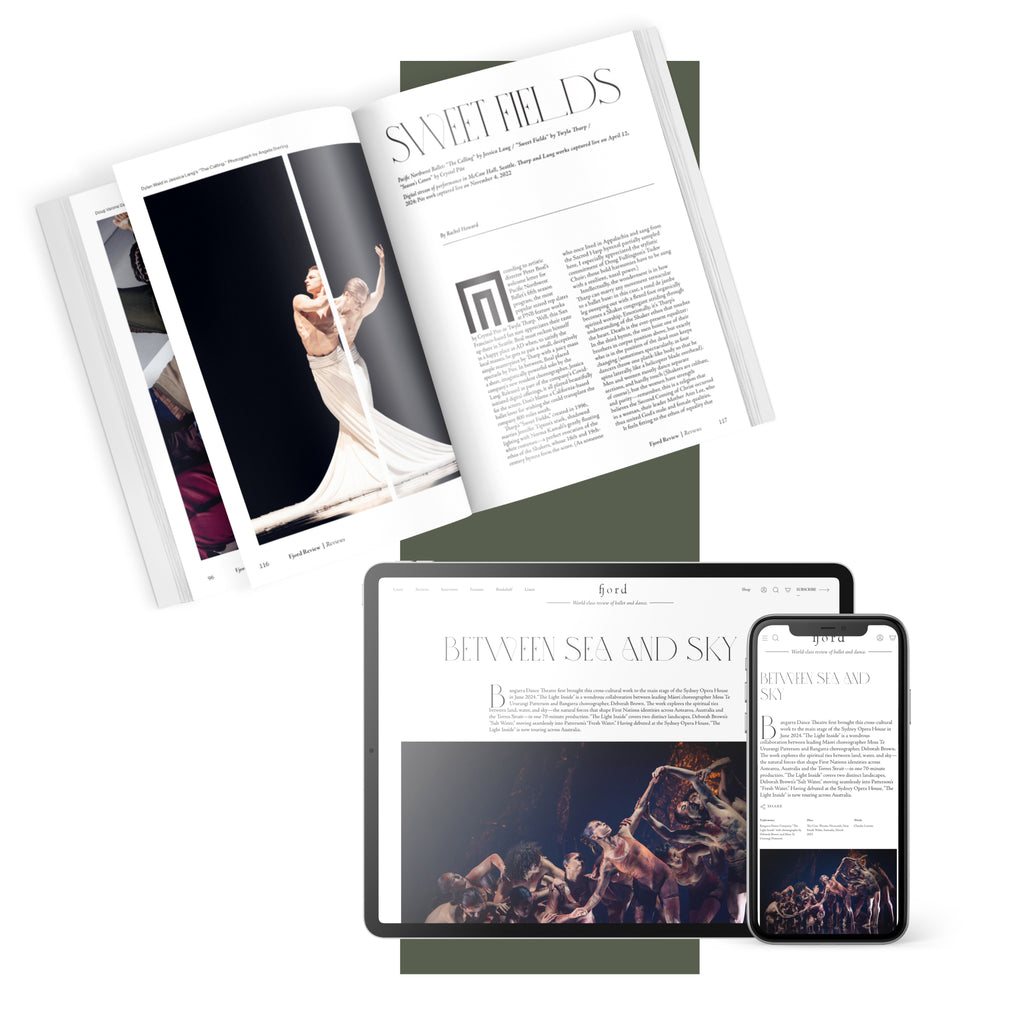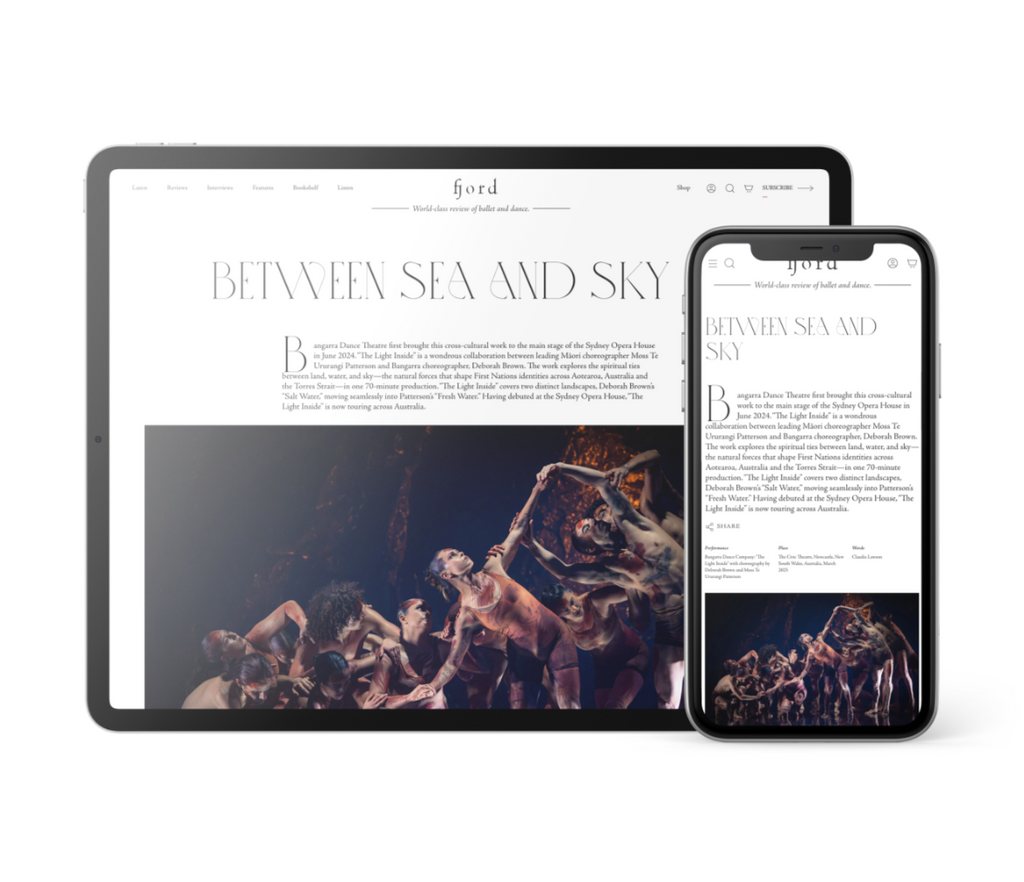The evening ended with the world premiere of Sorzano’s “Solfége,” set to Tan Dun’s “Symphonic Poem of 3 Notes.” The work is divided into three sections, explained by the choreographer in a pre-performance interview video to represent the beginning, middle, and end of the creation of a world. This approach is similar to Dun’s own philosophy about his music. In the program notes, the composer is quoted as comparing the three solfege pitches, La, Si, and Do, as representing the beginning, middle, and end of all things.
The beginning section of “Solfège” had the feel of a witches coven conjuring up something from nothing. The stage was dimly lit, with projections of spindly trees lining the wings. The movement felt simultaneously sinister and enchanting, with dancers taking on the cadences of ghoulish beings like vampires and spiders. The section ended with a distinctly arachnidian solo for company dancer Lindsey Faber, in which her body morphed into that of the creature, twisting and scuttling about.
The middle section was ushered in by a musical shift to a deeply rhythmic, intense section that included the words “la, si, and do” spoken with fervor. The dancer’s movement became much more human, as if they too had changed. When the music adjusted again, taking on a hopeful, almost fantastic quality, the choreography also became almost transcendent, as if the dancers were touching a higher plane from their place onstage.
As the work comes to a close, the audience gets a glimpse of the proverbial ending, which bears many similarities to the beginning. The movement becomes spiderlike once again, and Solfège concludes with the majority of the cast slinking into the darkness, leaving Kim alone center stage. He performs a short solo, culminating in a slow off-kilter spin. The blackout returns the piece—and the evening as a whole—to where it began.











comments